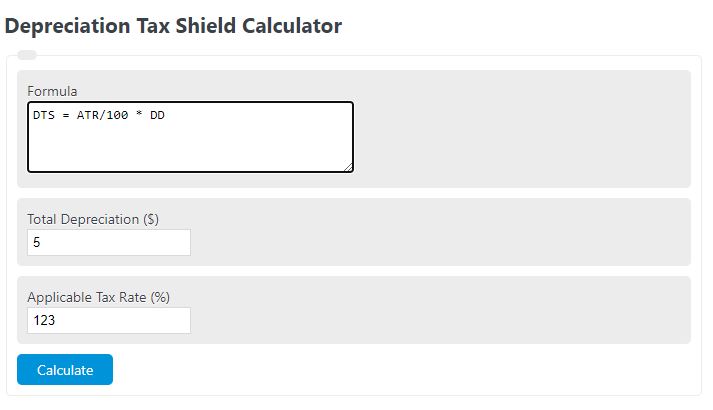Depreciation Tax Shield What Is It, Formula, Example

For example, if you had medical expenses of $15,000 and your income was $50,000, you could deduct the expense, and you would be taxed on only $35,000 of your income. This machinery has an estimated useful life of 10 years and a salvage value of $10,000. As for the taxes owed, we’ll multiply how to determine a corporate strategy for your operations management plan EBT by our 20% tax rate assumption, and net income is equal to EBT subtracted by the tax. In the final step, the depreciation expense — typically an estimated amount based on historical spending (i.e. a percentage of Capex) and management guidance — is multiplied by the tax rate.
Accretion / Dilution – The Ultimate Guide (
A depreciation tax shield is a tax reduction technique under which depreciation expenses are subtracted from taxable income. The tax shield is a very important aspect of corporate accounting since it is the amount a company can save on income tax payments by using various deductible expenses. The higher the savings from the tax shield, the higher the company’s cash profit. The extent of tax shield varies from nation to nation, and their benefits also vary based on the overall tax rate. Interest expenses are, as opposed to dividends and capital gains, tax-deductible. These are the tax benefits derived from the creative structuring of a financial arrangement.
The Financial Modeling Certification
To maximize your depreciation tax shield, it is advisable to consult with a CPA who has experience in our industry. All of these examples enable taxpayers to take deductions on their earnings, which lowers their taxable income and “shields” them from additional taxes. The good news is that calculating a tax shield can be fairly straightforward to do as long as you have the right information. You will need to know your individual tax rate as well as the amount of all your tax-deductible expenses.
Free Financial Modeling Lessons
A tax shield is a way for individual taxpayers and corporations to reduce their taxable income. This happens through claiming allowable deductions like medical expenses, charitable donations, or mortgage interest. Companies using accelerated depreciation methods (higher depreciation in initial years) are able to save more taxes due to higher value of tax shield. A tax shield will allow a taxpayer to reduce their taxable income or defer their income taxes to a time in the future.
What Is the Formula for Tax Shield?
You may also look into the related articles below for a better understanding. Finally, we conclude on account of the above-stated cases that a tax shield can be utilized as a valuable option for effectively evaluating cash flow, financing, etc., activities. A 25 % depreciation for plant and machinery is available on accelerated depreciation basis as Income tax exemption.
- There are many examples of a tax shield, and it often depends on the tax rate of the corporation or individual as well as their tax-deductible expenses.
- Other tax deductions include student loan interest, charitable donations, and certain medical expenses.
- However, the straight-line depreciation method, the depreciation shield is lower.
- Imagine a small business that invests in machinery for production purposes.
- This tax-efficient investment method is used particularly by high-net-worth individuals and corporations that face steep tax rates.
Below, we take a look at an example of how a change in the Depreciation method can have an impact on Cash Flow (and thus Valuation). The dollars saved represent the ‘Tax Shield’ created by Depreciation. As you can see from the above calculation, the Depreciation Tax Savings as the expense increases. In Case we don’t take the Depreciation into account, then the Total Tax to be paid by the company is 1381 Dollar. Julia Kagan is a financial/consumer journalist and former senior editor, personal finance, of Investopedia.
Tax-efficient investment strategies are cornerstones of investing for high net-worth individuals and corporations, whose annual tax bills can be very high. Taxpayers who wish to benefit from tax shields must itemize their expenses, and itemizing is not always in the best interest of the taxpayer. It only benefits you to itemize when the total of all of your deductions exceeds the standard deduction for your filing status.

When it comes to understanding the tax shield definition, understanding how to calculate it under different scenarios is important. Get instant access to video lessons taught by experienced investment bankers. Learn financial statement modeling, DCF, M&A, LBO, Comps and Excel shortcuts. The difference in EBIT amounts to $2 million, entirely attributable to the depreciation expense. There are a variety of deductions that can shield a company (or Individual) from paying Taxes.
The tax shield concept may not apply in some government jurisdictions where depreciation is not allowed as a tax deduction. The use of a depreciation tax shield is most applicable in asset-intensive industries, where there are large amounts of fixed assets that can be depreciated. Conversely, a services business may have few (if any) fixed assets, and so will not have a material amount of depreciation to employ as a tax shield. It should be noted that regardless of what depreciation method is used the total expense will be the same over the life of the asset. Thus, the benefit comes from the time value of money and pushing tax expenses out as far as possible.

अधिकारी पश्चिम रैवारको सह सम्पादक हुन् । रेडियो बान्नीगढीमा समाचार सम्पादक समेत रहेका उनले समसामयीक बिषयमा कलम चलाउछन् ।
क्याटेगोरी : सुदूरपश्चिम
















प्रतिक्रिया